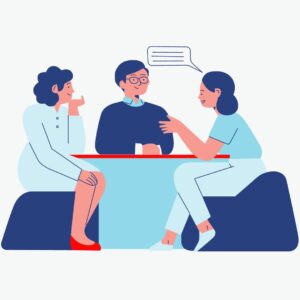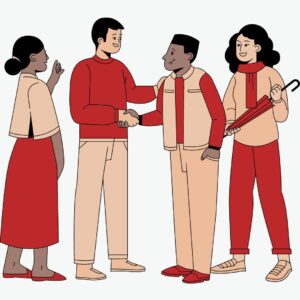Patient Engagement in Research
Patients are the ones who the therapy is made for, so it’s important to get their input about what therapeutic benefits actually matter to them. Patients can help researchers better understand the challenges of these therapies and clinical care for their condition. Patients can also help improve study design and educational materials to make clinical trials more effective and help other patients with the condition better understand the risks and benefits of gene therapy.
Learn more about patient engagement efforts at the Foundation for the National Institutes of Health (FNIH) here: Patient Voices | FNIH

How to Involve Patients and Caregivers in Research

The Patient-Centered Outcomes Research Institute (PCORI) required investigators to include patients (as well as other stakeholders) in the research process. Almost 2/3 of these projects used multiple methods to engage patients.
In these projects, patients helped determine the study design, selected study outcomes, improved educational materials and informed consent forms, tailored interventions for specific populations or settings, assisted in enrolling participants, and more.
Many studies reported that patient engagement made positive contributions to research feasibility, acceptability, rigor, and relevance. Most of these contributions were based on personal reflections from study authors, but some projects systematically measured impact with user feedback and statistics that measured enrollment or retention in studies.

Patient-Researcher Forum (PRF) is a series that promoted “a community-engaged research approach through communication, compassion, and bi-directional research insight for both patients/caregivers and researchers”.
Each month a patient and caregiver were invited to meet with researchers and start off with a tour of the lab. Clinicians who treat the patients’ condition were also invited to explain current treatment options and unmet needs to researchers. Then there was a meeting where researchers shared about their experience and their research that is relevant to the patient. The patient shared their story and experience with the condition, and then the group had a moderated roundtable discussion to exchange ideas and perspectives.
This helped patients and caregivers learn about the research process and gave them a more positive outlook about research. Researchers found that the forums reinforced their decision to work in research, helped them see the patient perspective, and helped them practice communicating research with a non-scientific audience.
 Participants: How researchers select participants varies by the research area. For some researchers, it may be beneficial to work with individual patients with the condition, caregivers, clinicians who treat patients with the condition, or patient advocacy organizations.
Participants: How researchers select participants varies by the research area. For some researchers, it may be beneficial to work with individual patients with the condition, caregivers, clinicians who treat patients with the condition, or patient advocacy organizations.
Plan: Create a formal plan that includes time commitments, what patients should expect from the research team, the scope of engagement for both patients and researchers, and a budget to pay patients or patient costs.
Training: Plan to educate patients with basic background on health research methods to give them good starting knowledge. Train researchers who will work with patients on the value of patient engagement, communication skills, and strategies to co-build ideas with patients and other researchers.
Respect: Set a requirement for mutual respect between researchers and patients, and value patient’s experiential knowledge as expertise.
Early: Start patient engagement early within the research process, and continue it (with either the same or different patients) as your research continues.
Patient engagement: What partnering with patient in research is all about – ScienceDirect

